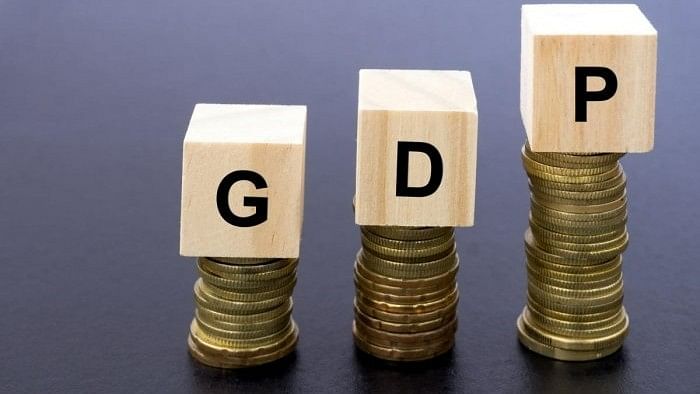
Representative image of GDP.
Credit: iStock Photo
New Delhi: S&P Global on Monday lowered its forecast on India’s GDP growth by 20 basis points for the financial years 2025-26 and 2026-27 while maintaining its projection for the current year at 6.8 per cent.
In an update to its economic forecast for Asia-Pacific economies after the US election results, the ratings agency said, “In India we see GDP growth easing to 6.8 per cent this fiscal year as high interest rates and a lower fiscal impulse temper urban demand.”
“While purchasing manager indices (PMIs) remain convincingly in the expansion zone, other high-frequency indicators indicate some transitory softening of growth momentum due to the hit to the construction sector in the September quarter,” it added.
India’s gross domestic product (GDP) expanded by a robust 8.2 per cent in the financial year ended March 2024.
For the current financial year, the Reserve Bank of India (RBI) has pegged GDP growth projection at 7.2 per cent, while the Economic Survey has put it in the range of 6.5 to 7 per cent. The International Monetary Fund (IMF) and the World Bank have pegged it at 7 per cent.
S&P Global’s latest India GDP growth projection for the current financial year is the same as announced in its earlier report.
As per the global rating agency, inflation is likely to ease but would remain above the RBI’s median target of 4 per cent till 2027-28. In the current financial year the headline retail inflation is estimated to decline to 4.6 per cent from 5.4 per cent recorded in the previous year. In the fiscal 2025-26, the headline retail inflation is estimated to moderate further to 4.4 per cent , but likely to rise again to 4.6 per cent in 2026-27.
The government has given RBI the target to maintain inflation in the 2-6 per cent band. The median target is 4 per cent.
RBI Governor Shaktikanta Das last week said that the central bank remained committed to align inflation with its legally mandated goal of 4 per cent on a durable basis.
S&P Global underlined that the persistent food inflation is delaying rate cuts by the Reserve Bank of India. “We expect the central bank to cut only once in the current fiscal year (ending March 31),” it said.
Consumer inflation is fuelled by supply shocks in agriculture, which have driven up food prices. These shocks are linked to changing rainfall patterns and climate change-driven heatwaves. Traditionally volatile and hard to predict, food inflation has become even more capricious lately, S&P Global said.
The rating agency further noted that the RBI cannot ignore food inflation when considering rate cuts. Food items make up nearly 46 per cent of the inflation basket and persistently high food inflation raises inflationary expectations.
As per the latest government data, the annual retail inflation rose to a 14-month high of 6.21 per cent in October driven by a sharp jump in food prices.